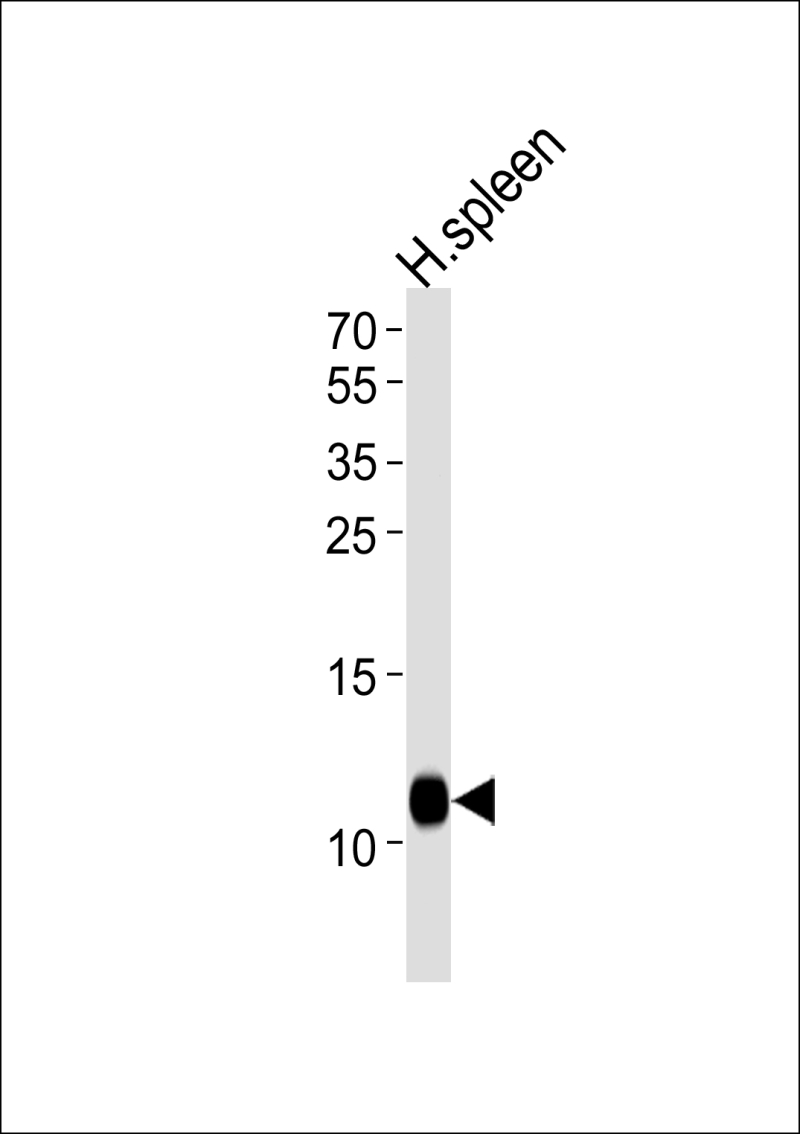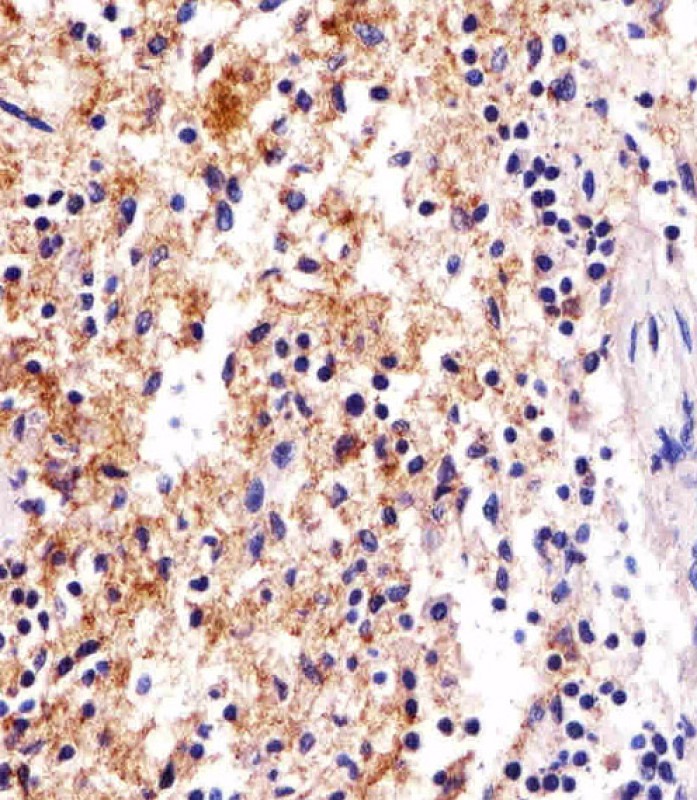

| WB | 1/1000 | Human,Mouse,Rat |
| IF | 咨询技术 | Human,Mouse,Rat |
| IHC | 1/100-1/500 | Human,Mouse,Rat |
| ICC | 技术咨询 | Human,Mouse,Rat |
| FCM | 咨询技术 | Human,Mouse,Rat |
| Elisa | 咨询技术 | Human,Mouse,Rat |
| Aliases | High affinity immunoglobulin epsilon receptor subunit gamma, Fc receptor gamma-chain, FcRgamma, Fc-epsilon RI-gamma, IgE Fc receptor subunit gamma, FceRI gamma, FCER1G |
| Entrez GeneID | 2207 |
| WB Predicted band size | 9.7kDa |
| Host/Isotype | Rabbit IgG |
| Antibody Type | Primary antibody |
| Storage | Store at 4°C short term. Aliquot and store at -20°C long term. Avoid freeze/thaw cycles. |
| Species Reactivity | Human, Mouse, Rat |
| Immunogen | This FCER1G antibody is generated from rabbits immunized with a KLH conjugated synthetic peptide between 60-86 amino acids from the C-terminal region of human FCER1G. |
| Formulation | Purified antibody in PBS with 0.05% sodium azide. |
+ +
以下是关于FCER1G抗体的3篇参考文献及其摘要概括:
1. **文献名称**:*FCER1G is essential for IgE-mediated mast cell activation*
**作者**:Dombrowicz, D., et al.
**摘要**:本研究通过基因敲除小鼠模型,证实FCER1G是IgE介导的肥大细胞活化的关键分子。实验显示,缺乏FCER1G的肥大细胞无法响应IgE交联引发的脱颗粒和炎症因子释放,表明其在过敏反应信号通路中的核心作用。
2. **文献名称**:*Targeting FCER1G in dendritic cells for immunotherapy of autoimmune diseases*
**作者**:Mukai, K., et al.
**摘要**:研究探讨了FCER1G在树突状细胞(DC)中的功能,发现其抗体阻断可抑制DC的异常活化及促炎因子分泌。动物实验表明,靶向FCER1G能减轻自身免疫性疾病模型小鼠的病理症状,提示其作为治疗靶点的潜力。
3. **文献名称**:*FCER1G interacts with TLR2 to modulate neutrophil functions in sepsis*
**作者**:Li, Y., et al.
**摘要**:文章揭示了FCER1G与TLR2在脓毒症中性粒细胞中的相互作用机制。通过抗体抑制实验,发现FCER1G通过增强TLR2信号通路促进中性粒细胞迁移和杀菌能力,为脓毒症免疫调节提供了新视角。
The FcεRIγ (FCER1G) antibody targets the gamma subunit of the high-affinity immunoglobulin epsilon receptor, a critical component in IgE-mediated allergic responses and immune signaling. FCER1G is a member of the immunoglobulin superfamily, forming a tetrameric complex with FcεRIα and β chains or partnering with other Fc receptors (e.g., FcγRI) in mast cells, basophils, and antigen-presenting cells. It plays a central role in amplifying inflammatory signals through its immunoreceptor tyrosine-based activation motif (ITAM), which triggers downstream pathways like MAPK and NF-κB upon IgE-antigen binding.
FCER1G antibodies are essential tools for studying allergic mechanisms, autoimmune disorders, and cancer immunology. They enable detection of FCER1G expression in Western blotting, immunohistochemistry, and flow cytometry, aiding research on mast cell activation, receptor trafficking, and therapeutic targeting. Dysregulation of FCER1G is linked to conditions such as asthma, atopic dermatitis, and certain lymphomas. Antibodies specific to FCER1G help dissect its interactions with adaptor proteins (e.g., SYK kinase) and evaluate inhibitors for allergic disease treatment. Commercial antibodies are typically monoclonal or polyclonal, validated for cross-reactivity across human and murine models. Rigorous validation ensures specificity, as FCER1G shares structural homology with other Fc receptor subunits. Researchers prioritize antibodies with high affinity and low lot-to-lot variability to ensure reproducibility in both diagnostic and experimental contexts.
×